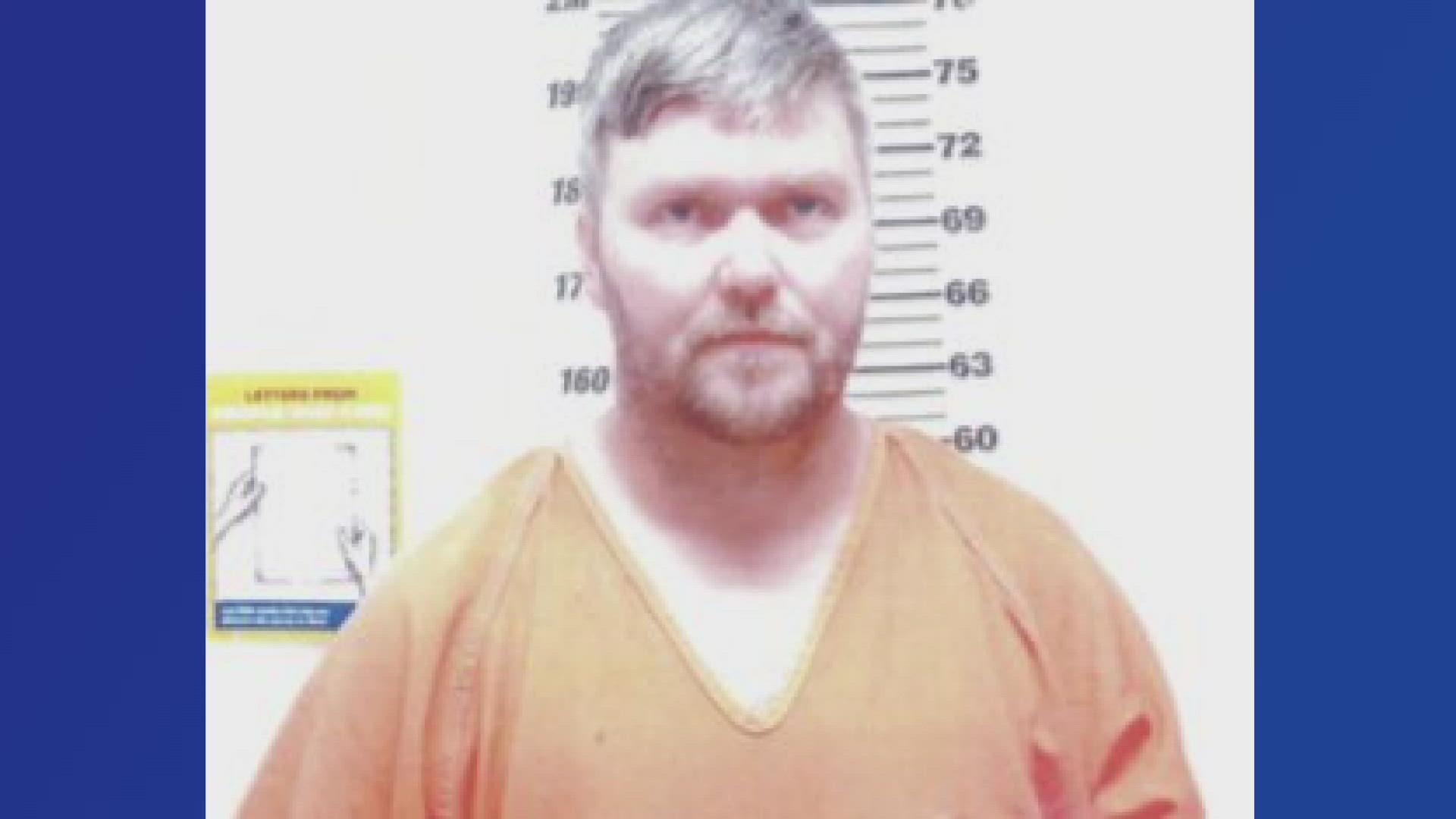MIDLAND, Texas — The story of Hailey Dunn has taken many twists and turns, but ever since an arrest was made in the case, the twists and turns seemed to be over.
But on Monday, a new twist spun the Hailey Dunn case into a spiral... when the man arrested for Hailey's murder... was released from jail.
13-year-old Colorado City cheerleader Hailey Dunn went missing on December 27, 2010. Her remains were found three years later in Scurry County. For a while, the case stalled, growing colder and colder by the day, until June of 2021, when Shawn Adkins, Hailey’s mother’s live-in boyfriend, was arrested by the Texas Rangers.
According to his arrest affidavit, authorities believe he struck Dunn in the head with a blunt object and intentionally tampered with her corpse.
Adkins was indicted for murder by a grand jury and awaited his trial.
And after spending two years behind bars, Adkins walked out of prison as a free man.
Dunn's private investigator said the prosecutor dropped the charges at the request of the FBI. She said the case was dismissed without prejudice. This means that the state can re-file the charges against Adkins at a later date.
Documents obtained by NewsWest 9 reveal why Adkins was dismissed. (You can view the documents yourself at the bottom of the article.)
The documents explained that “further investigation is needed in order to prove the elements of the offenses beyond a reasonable doubt.”
The prosecution still views Adkins as the primary suspect; however, additional work must be done before the case can proceed to a jury trial.
The documents explain how this is a "complex circumstantial case". Several leads and potential evidence were collected and worked with for over a decade. This includes soil, cell records and even a polygraph test not mentioned in the documents.
One of the pieces of evidence involved a soil analysis conducted by a soil expert. Work boots of Adkins were obtained with “a high degree of chemical similarity with soil samples collected from the remains site.”
The soil samples were sent to an FBI Crime Lab, where the forensic scientists determined that the soil sample from the boot did not match the soil samples near Dunn’s remains.
While preparing for the trial, the State of Texas met with the FBI and learned that the testing method used, known as Near Infrared Spectroscopy, or “NIRS”, “is not a testing methodology sanctioned by the forensic science community for soil analysis.” The FBI stands by their original testing and doesn’t believe that the testing should be relied on in a criminal trial.
When Dunn’s body was found in 2013, a forensic anthropologist observed blunt force injuries to her skull and determined the injuries to be inflicted at or near the time of death. This would have likely resulted in significant bleeding.
While multiple searches of the house were conducted by law enforcement, there weren’t any forensic testing done in the house in the immediate aftermath of Hailey disappearance in 2010.
Multiple searches of the car, as well as the location of Dunn’s remains, were conducted by law enforcement. As a result of the searches, some evidence was collected that was never forensically tested. According to the documents, “Before this case proceeds to trial, that evidence should be thoroughly tested to determine if it has any value.”
Another major piece of evidence was the cell records and cell tower records of Hailey and Adkins. After analysis of these records, on Dec 27, 2010, Dunn sent a text at 2:16 p.m. and 2:27 p.m. At the same time, Adkins’s cell connected to a cell tower in Big Spring, TX at 1:53 p.m. and 2:40 p.m. Adkins also took a call at 2:56 pm which connected to a cell tower along I-20 east of Big Spring but west of Colorado City. A minute later, an incoming call to Dunn’s cell phone connected to a cell tower in Colorado City. These facts show that Dunn might’ve been alive before 2:57 pm on Dec 27.
There are also issues with the timeline. The day before, on Dec 26, Hailey’s brother spent the night with two friends, returning home on Dec 27 at about 5 p.m. When he got there, according to the document, he talked to Adkins, and Hailey was not there. At 6 p.m., Adkins left and picked up Hailey’s mother from work in Snyder, TX. Adkins wasn’t alone again until the following morning.
Putting all of this together, the documents say that if Hailey was alive when Adkins arrived at home, he would have been alone with Hailey for at most about two hours from 3 p.m. to 5 p.m. This would mean Adkins would have had to kill her, clean up any blood and other incriminating evidence in the home and hide her body in a relatively short amount of time. While not impossible, it brings more challenges given the prior issues.
In the conclusion section, the documents state that there is no direct eyewitness to Dunn’s murder, nor any known current forensic science evidence directly linking Adkins to the murder.
Due to all these factors, “the current state of the evidence is not sufficient for the prosecution to proceed to trial.” The prosecution believes that additional investigation is needed.
Although Adkins was dismissed without prejudice by Mitchell County, prosecution still considers Adkins their leading suspect, and maybe with this additional investigation, the case of Hailey Dunn… can finally reach its end.
If you want to read the documents for yourself, they are are below:
We will continue to update this story as we receive more information.

